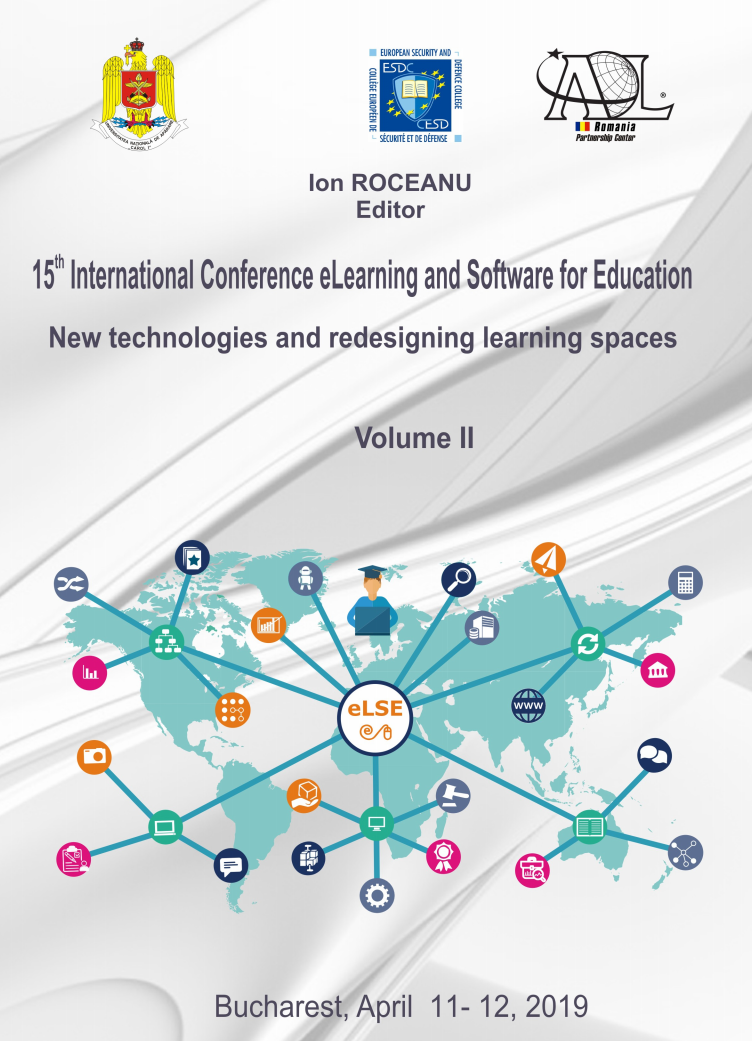Redesigning Educational Tools Using Auto-Generative Learning Objects
Redesigning Educational Tools Using Auto-Generative Learning Objects
Author(s): Felicia-Mirabela Costea, Ciprian-Bogdan Chirilă, Vladimir-Ioan CrețuSubject(s): Social Sciences, Education, Higher Education
Published by: Carol I National Defence University Publishing House
Keywords: Auto-generative learning objects;
Summary/Abstract: Technology development affects all areas of social life. In the digital age we live in, education must keep up with new trends. This can be achieved by transforming how learning is organized into a modern, efficient and flexible one. Young people in our society are almost technology dependent, using electronic devices for both learning, socializing and leisure. The field of e-learning has significant potential for research as it is a quite new concept in the current socio-economic context of Romania. Digital technology produces certain changes in the learning environment such as virtual learning space, independent and individualized learning, real-time monitoring of work. The concept of learning object is defined very vaguely and therefore there is a variety of learning objects models and new proposals appear continuously. The most widely used e-learning standards are SCORM, IEEE LOM, IMS, LRMI, CISCO. A generative model is an effective way to learn using independent learning. Generating generative models on computer disciplines and information technology would be an effective support for students. Interactive questions play an important role in e-learning and offer a wide range of benefits to both the student and the tutor. The generative model has emerged to improve the use of learning objects. Auto-generative learning objects (AGLO) retain the philosophy of the generative model, but generation is different. The AGLO approach uses metaprogramming to generate content, and the main difference is that this generation relies heavily on random numbers and dynamic content. Following the study of existing objects, we identified the generative learning objects as having potential for further development.
Journal: Conference proceedings of »eLearning and Software for Education« (eLSE)
- Issue Year: 15/2019
- Issue No: 02
- Page Range: 345-350
- Page Count: 6
- Language: English

